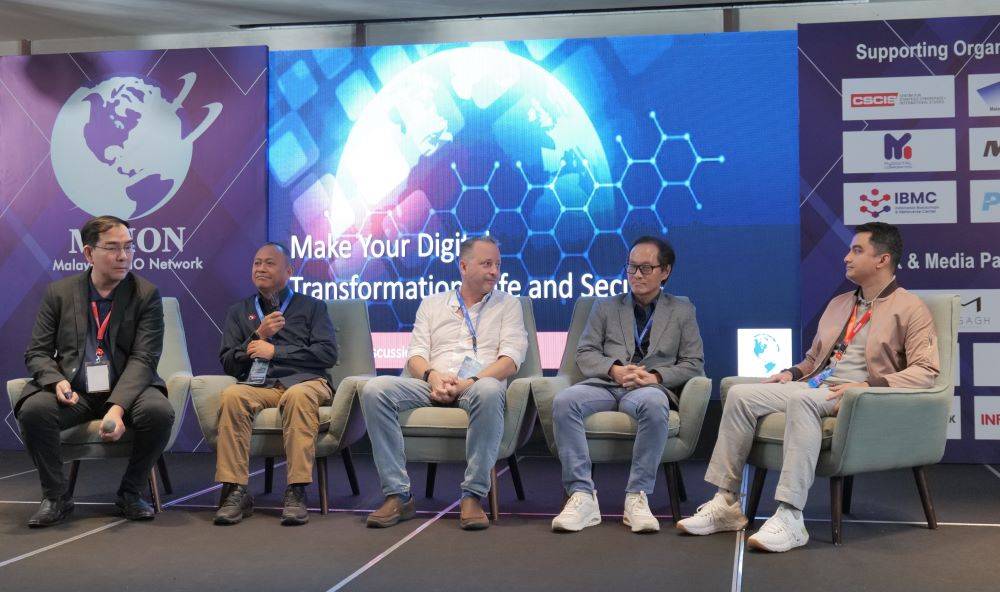During one panel discussion at MCION’s inaugural event in Penang, Malaysia, panellists from local and regional brands, agreed that digital transformation is important for businesses to survive, but that it also increases security risks due to more loopholes and vulnerabilities.
Cybersecurity needs to be built-in from the start of any implementation, not bolted on as an afterthought. And organizations would do well to consider the partners in their ecosystem that would need to have their security managed, for instance third-party vendors and business partners, and more. If used at all, guidelines and audits are the methods most often used to ensure these third-parties conform to an organization’s desired level of security.
And as the audience soaked all these best practices in, other gems of knowledge also emerged.
No matter how big or small an IT project is, it is merely a digitalization/digitization exercise if it does not achieve any objective set by the business.
DX drivers and benefits

Telkom Indonesia and Toyota Astra Motor, were two organizations that shared how the current landscape drives them to transform digitally.
Dr. Marcelino Pandin, Commissioner at Telkom Indonesia said that fierce competition from new digital businesses as well as new technological changes are creating momentum for the telco conglomerate to unlock their idle infrastructure and provide better experience to their customers, as well as attract digital talents. “It’s very hard for us to find digital talent in the middle level,” he admitted, while adding that the third benefit from their digital transformation came in the form of a new growth story for their investors.
However, digital transformation often calls for new processes and/or new technologies, and perhaps even new skills to equip existing talents with. Unfortunately, this means more opportunities for hackers to test vulnerabilities in the security perimeter and exploit them.
“The bottomline is that digital transformation is a test for our cybersecurity measures,” Dr. Marcelino said.
Darmadi, CIO at Toyota Astra Motor, was cautious about use of the word ‘digital transformation’, and he wanted to delve deeper into what digital transformation actually means. Basically, if there is no real business objective to an IT initiative, or an expected business outcome, it becomes just a digitalization/digitization initiative.
So what exactly is it that the business wants to transform, he asked hypothetically.
What he observed for Toyota globally is that in responding to changing business conditions and customer requirements, it wants to transform from being a car seller to being a mobility company.
Basically, if there is no real business objective to an IT initiative, or an expected business outcome, it becomes just a digitalization/digitization initiative.
“We want our customers to be happy. We want our customers to have a seamless experience from when they become our leads, when they become our customer, and when it’s time for them to repurchase a car.”
Darmadi shared that the goal is to improve the customer’s experience and behavior through these integrated digital efforts as part of Toyota’s overall roadmap for transformation.
Digital transformation perspectives
At some point, the discussion became about how to actually overcome resistance towards digital transformation and adoption of new technologies, and even how to optimize the use of these technologies. Dr. Marcelino said digital transformation has to be holistic and also involve educating people at all levels on how to leverage new technologies.
This has to go hand-in-hand with guidance on how to navigate potential risks like oversharing of personal information, data privacy and protection.
To this, Capital A CISO, Steve Harbick, had opined that when new technologies and processes are introduced, employees may need to learn new skills to adapt and be prepared for changes in their job roles.
PIKOM’s Johary Mustaffa felt that digital transformation is an ongoing process that keeps looping because there are so many digital tools being created all the time. Rather than a top down approach of driving transformation, he stated organizations, and especially those that are self-aware, have to empower employees at the mid-level to actually, “…come up with their own digital transformation.”








